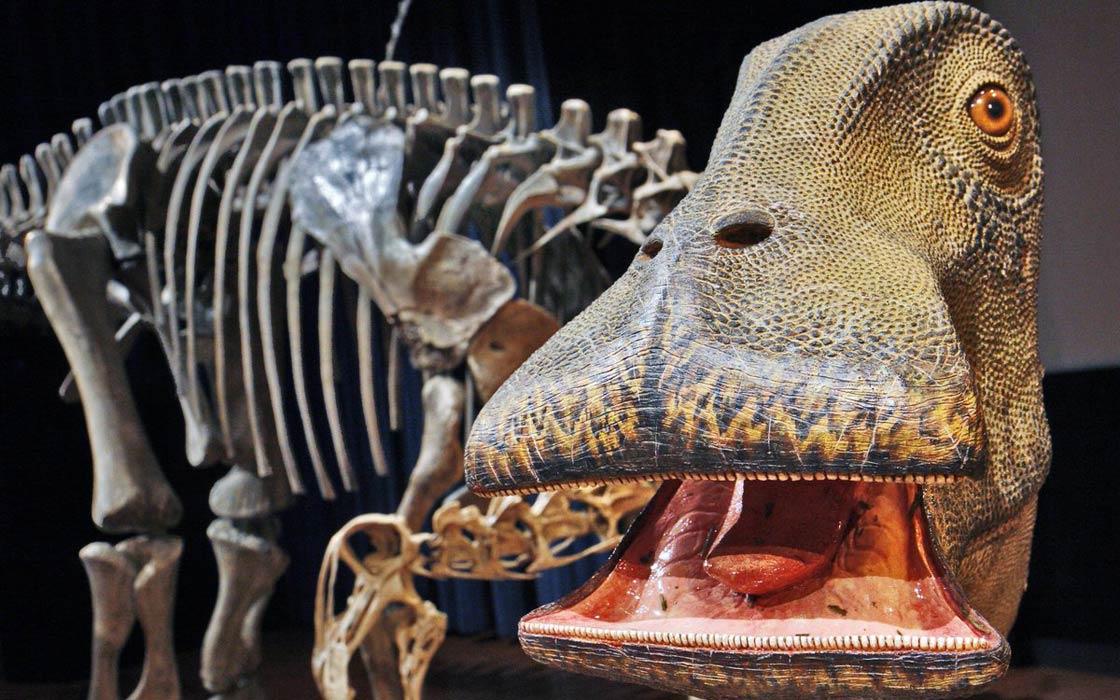The Nigersaurus stands out as one of the most fascinating and unforgettable dinosaurs due to its unique anatomical features, particularly its "smile." This herbivorous dinosaur, which roamed the earth millions of years ago, possesses a distinctive dental arrangement that has captivated paleontologists and dinosaur enthusiasts alike. With its broad, flat muzzle, the Nigersaurus' smile is truly unlike any other dinosaur discovered, making it a subject of intrigue and study in the scientific community.
The discovery of the Nigersaurus has provided significant insights into the diversity and adaptability of dinosaurs during the Cretaceous period. Its unusual dental structure, which includes over 500 teeth, was perfectly adapted for its herbivorous diet, allowing it to efficiently graze on vegetation. This unique characteristic has led to numerous studies aimed at understanding how such a specialized feeding mechanism evolved and functioned in its natural habitat.
Beyond its anatomical peculiarities, the Nigersaurus has also become a symbol of the incredible diversity of life that existed on Earth millions of years ago. The fossilized remains of this dinosaur have helped scientists piece together the ecological dynamics of its time, offering a glimpse into the evolutionary history that shaped the modern world. As an unforgettable dinosaur with a unique smile, the Nigersaurus continues to inspire wonder and curiosity among those who study it.
Read also:Dez Bryant Net Worth 2023 Financial Success Of A Legendary Nfl Star
Table of Contents
- Discovery of the Nigersaurus
- What Makes the Nigersaurus Unique?
- How Did the Nigersaurus Eat?
- Where Did the Nigersaurus Live?
- The Nigersaurus in Popular Culture
- Why is the Nigersaurus Important to Paleontology?
- Could the Nigersaurus Adapt to Today's World?
- What Can We Learn from the Nigersaurus?
- The Legacy of the Nigersaurus
Discovery of the Nigersaurus
The Nigersaurus was first discovered in the Elrhaz Formation in Niger, Africa, in the early 2000s. The discovery was led by paleontologist Paul Sereno and his team, who unearthed the fossils of this distinctive dinosaur in a region rich with ancient life. The region, known for its expansive fossil beds, provided a perfect backdrop for uncovering the secrets of this unique dinosaur.
What Makes the Nigersaurus Unique?
The Nigersaurus is primarily known for its unusual dental arrangement. Unlike other herbivorous dinosaurs, the Nigersaurus had a broad, flat muzzle filled with over 500 replaceable teeth. This allowed it to graze extensive areas of vegetation efficiently. Its long neck and lightweight skull structure further distinguish it from other dinosaurs of its time.
How Did the Nigersaurus Eat?
The Nigersaurus was a ground-level grazer, using its broad muzzle to sweep through low-lying vegetation. Its dental arrangement was highly specialized, with teeth replaced every 14 days, ensuring it always had a fresh set for optimal feeding. This constant renewal of teeth highlights an evolutionary adaptation specific to its diet and environment.
Where Did the Nigersaurus Live?
This dinosaur thrived in what is now the Sahara Desert, a region that was lush and filled with diverse plant life during the Cretaceous period. The environment provided ample resources for the Nigersaurus to sustain its herbivorous lifestyle. Fossil evidence suggests it lived alongside a variety of other dinosaurs and ancient creatures, contributing to a complex ecosystem.
The Nigersaurus in Popular Culture
Since its discovery, the Nigersaurus has captured the imagination of the public and has been featured in various documentaries and educational programs. Its unique appearance and intriguing adaptations have made it a popular subject in discussions about dinosaur diversity and evolution.
Why is the Nigersaurus Important to Paleontology?
The Nigersaurus provides critical insights into the diversity and evolution of sauropod dinosaurs. Its specialized feeding mechanism offers clues about dietary adaptations and ecological niches occupied by dinosaurs during the Cretaceous period. The study of its fossils has helped paleontologists understand the evolutionary pressures that shaped the development of herbivorous dinosaurs.
Read also:Don Henley Net Worth A Detailed Financial Overview
Could the Nigersaurus Adapt to Today's World?
While the Nigersaurus was well-adapted to its environment millions of years ago, it's unlikely that it could survive in today's world. Modern ecosystems and climates differ significantly from those of the Cretaceous period. Additionally, the absence of the specific plant species it relied on for sustenance would pose a significant challenge to its survival.
What Can We Learn from the Nigersaurus?
The Nigersaurus teaches us about the complexity of life on Earth and the adaptability of species to their environments. By studying its unique features and adaptations, scientists gain valuable insights into evolutionary biology, ecology, and the history of life on our planet. Its story encourages us to appreciate the diversity and resilience of life forms that have existed throughout Earth's history.
The Legacy of the Nigersaurus
The legacy of the Nigersaurus is one of wonder and discovery. As an unforgettable dinosaur with a unique smile, it continues to inspire curiosity and learning among scientists, students, and dinosaur enthusiasts worldwide. Its story is a testament to the incredible diversity of life that once thrived on our planet, reminding us of the ever-evolving nature of life on Earth.

